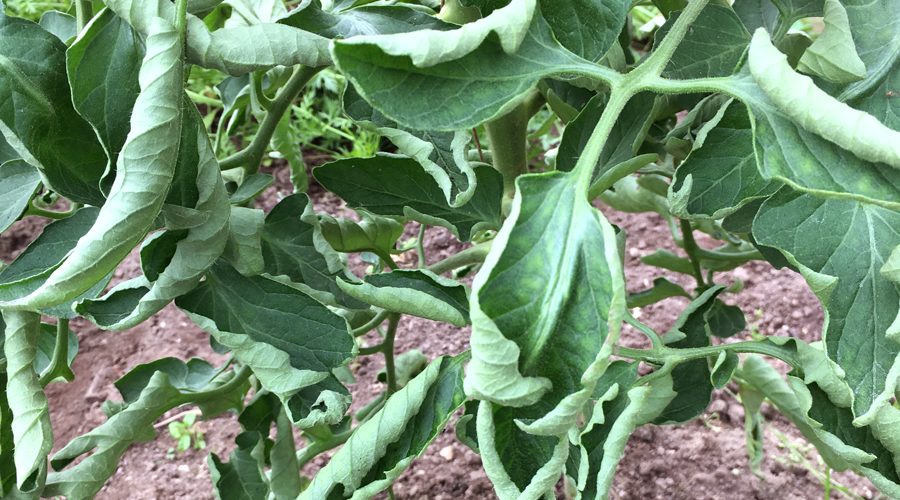It’s good to check your plants regularly for some of the more common problems so that you can give plants some first aid if needed. This article guides you through some of the more typical issues, like blight, leaf spot and mildew.
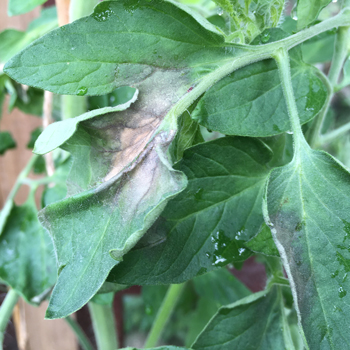
Blight
This is mostly a problem with potatoes and tomatoes. You’ll recognise it by brown patches on the leaves initially, which will then travel down the stems and eventually to the potatoes/tomatoes themselves. Assuming you’re growing organically there’s not much you can do about it once you’ve got it, so we recommend cutting off infected foliage as you see it – this will slow down the spread of blight and hopefully you’ll manage to get a crop.
It is more common when the weather is damp, and often will take hold in late July/early August. However, it can strike if weather conditions are warm and damp in June…
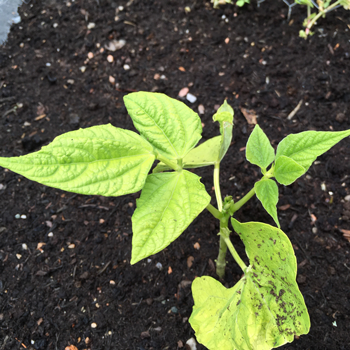
Chlorosis/Nutrient Deficiency
Your plants will soon show you if they are not getting enough nutrients – yellow leaves, dry papery patches on leaves, pink/purple discolouration are all signs. Try adding wormcast fertiliser to your soil, or use a liquid feed. Make sure that your plants have enough water too as this is how they are able to absorb the nutrients.
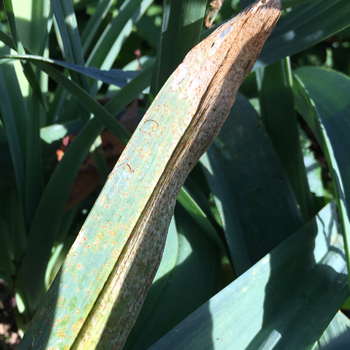
Leek Rust
Leek Rust is a fungus that develops on the leaves of any alliums – leeks, onions, garlic – that often occurs in beds where plants are overcrowded or where the soil is rich in nitrogen. You’ll recognise it by brownish orange streaks or spots on the leaves of leeks, onions and garlic. This usually appears in late summer/early autumn. If infected, we’d recommend harvesting your crop and removing affected leaves before using them in the kitchen.
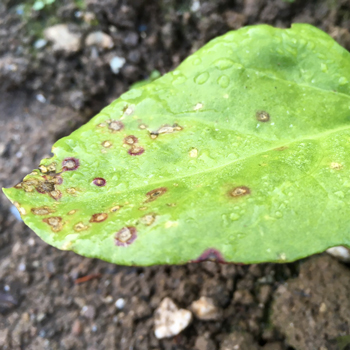
Leaf Spot
Brown spots on the leaves of beetroot, spinach and chard is not uncommon, particularly in damp conditions. Pick off affected foliage as soon as you see it to stop the fungal disease from spreading. It can be improved by leaving more space between plants, and thinning out foliage so that more air can circulate and to allow new leaves to come through healthily.
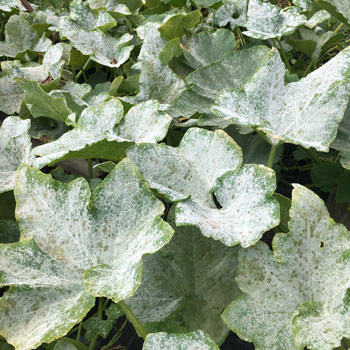
Powdery Mildew
Courgettes, pumpkins, squashes, melons and cucumbers are likely to suffer from this from time to time. The leaves will develop silvery spots and patches of mildew. Don’t worry about it too much, but do try to minimise it by cutting off and destroying affected leaves. If you keep the plants well watered and mulched then you can help to prevent it.
Be aware, that powdery mildew is a very normal part of the plants’ lifecycle, and will often come in quite heavily in September/October while the fruits are ripening – eventually the leaves die off, but the fruit remains unaffected on the stems.
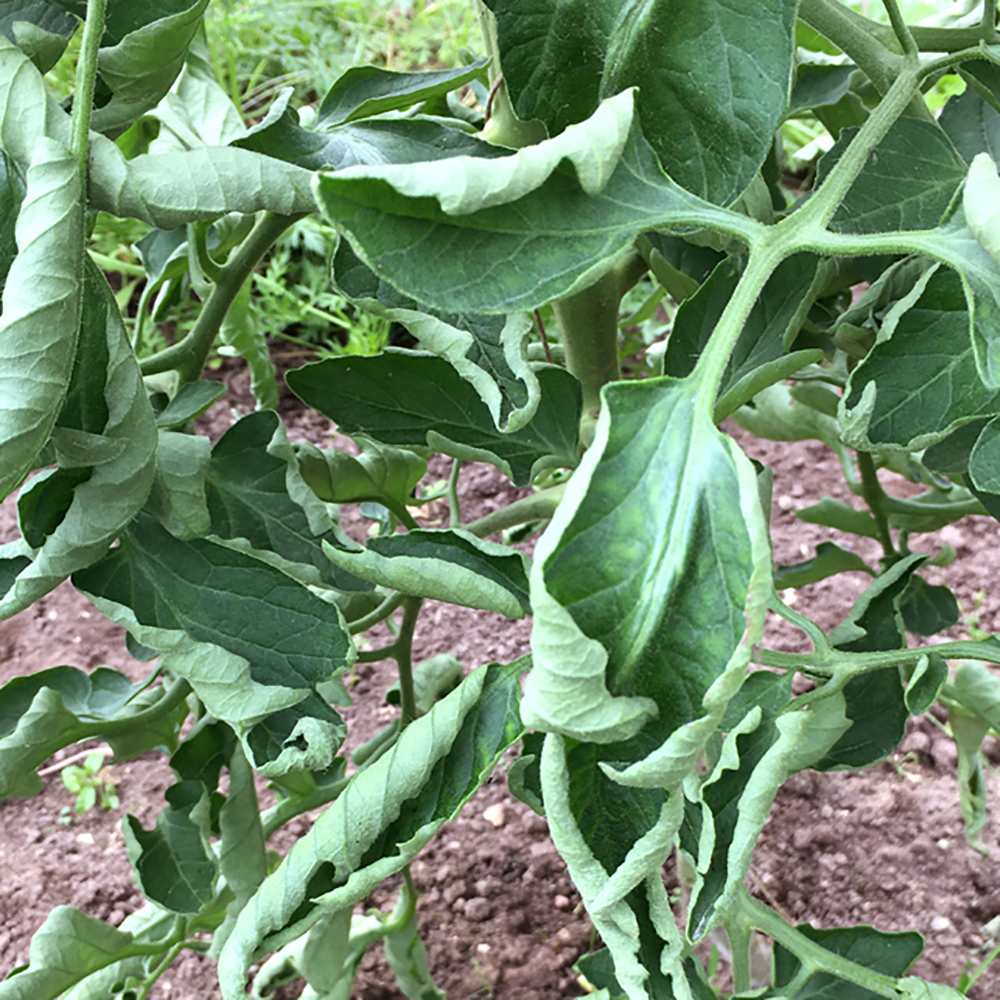
Leaf Curl
There are several potential causes of leaf curl (also known as leaf roll) on tomato plants, and all indicate some form of plant stress. Essentially, the plants are going into self defence mode, and it is thought that by curling their leaves they can handle their conditions better, particularly in terms of excess/lack of water.
The most common causes are overwatering, or irregular watering, and also cold nights (so it can be more common for outdoor grown plants. You can help plants by watering more regularly and doing what you can to keep them warm. Another possible cause is hard pruning – if you’re pinching out sideshoots, it is best to pinch them out when small so that the plant doesn’t feel the stress! There are viral causes, but these are less common and it is far more likely to be one of the reasons already mentioned.
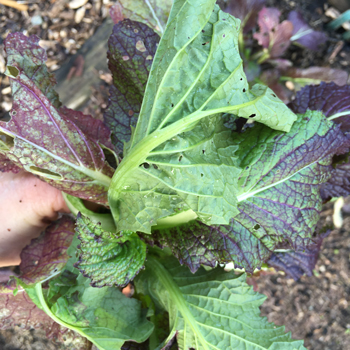
Wilting
Droopy leaves are more often than not the sign of a plant being too hot and underwatered. Check the moisture levels in the soil (push your finger into the soil to check moisture is below surface level!) and consider the daytime temperatures. A thorough watering should help revive plants quite quickly – and don’t be afraid to water in the middle of the day which we know many gardeners will advise against – but if plants are wilting badly and you leave it until the evening or following morning, it might just be too late.
It could also be a problem with the roots of your plants – for example a fungal disease that has been lurking in the soil or larvae burrowing into the soil and eating the roots. This is more common with brassicas, and we’d expect you to see one or two plants starting to wilt whilst others may look healthy. If this is the case, pull up the wilting plant to check the roots for any damage. Destroy plants if there is a problem to stop it from spreading.

